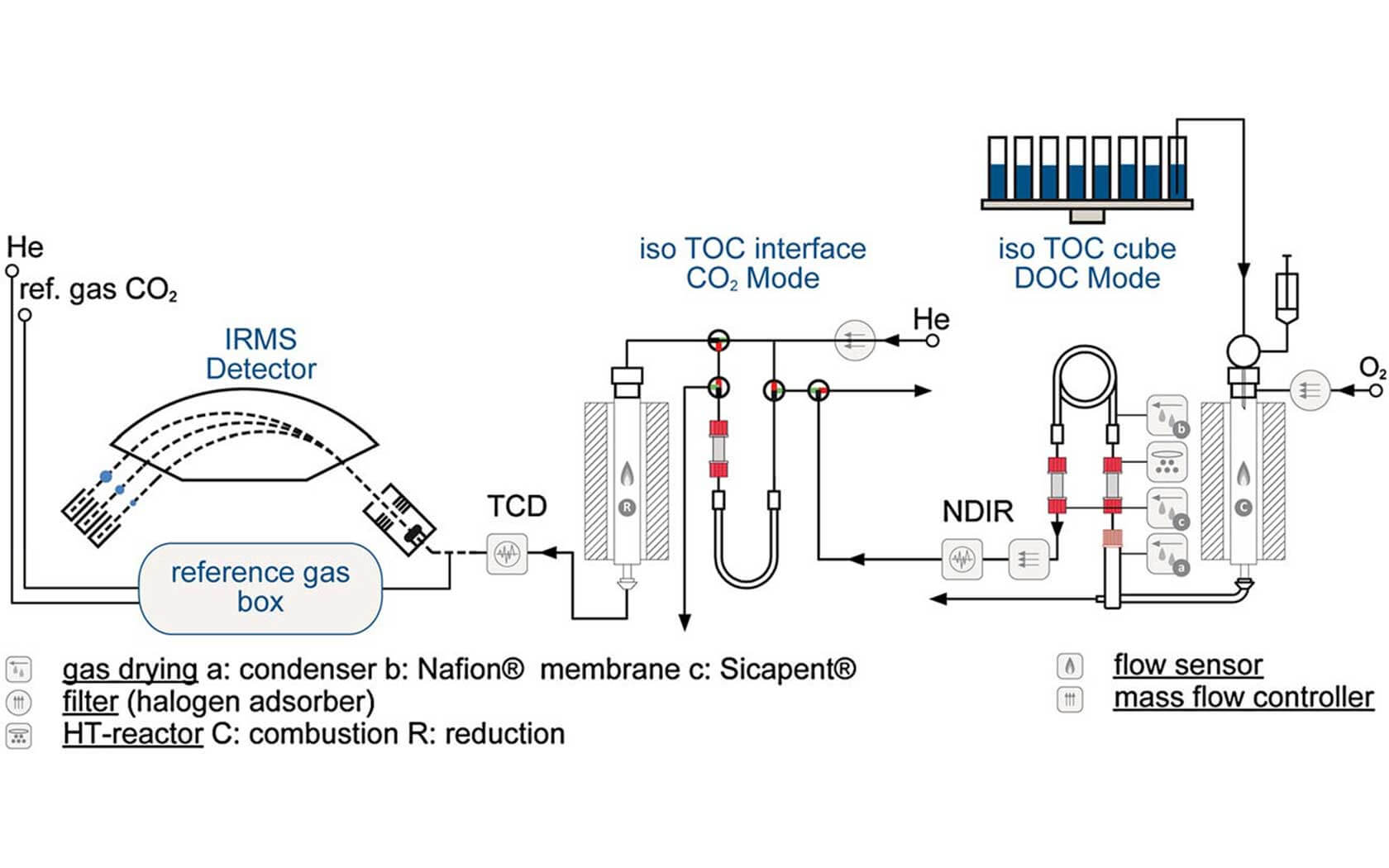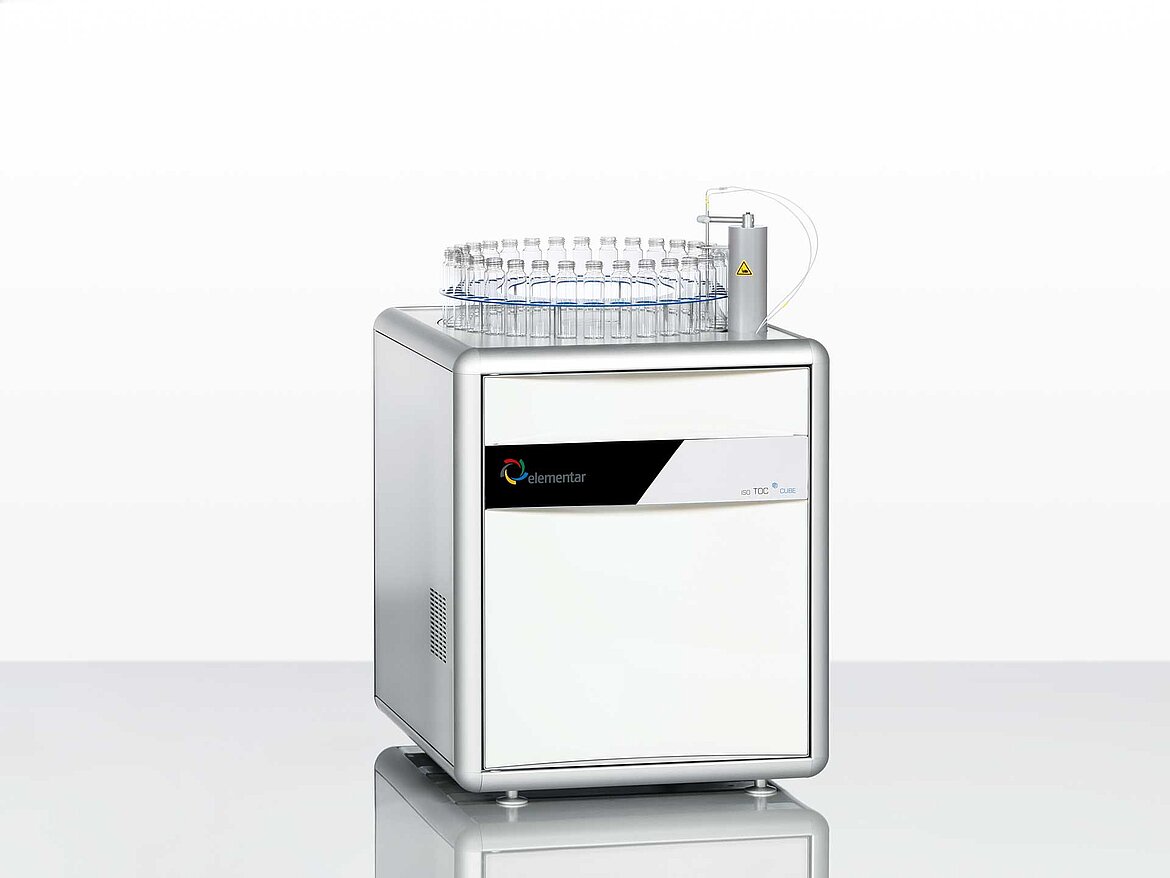A novel high-temperature combustion based system for stable isotope analysis of dissolved organic carbon in aqueous samples. I: development and validation
E. Federherr1,2, C. Cerli3, F. M. S. A. Kirkels3, K. Kalbitz3, H. J. Kupka2, R. Dunsbach2, L. Lange2 and T. C. Schmidt1
1Instrumental Analytical Chemistry, University of Duisburg-Essen, Universitätsstr. 5, 45141 Essen, Germany
2Research and Innovation, Elementar-Straße 1, 63505 Langenselbold, Germany
3Institute for Biodiversity and Ecosystem Dynamics, University of Amsterdam, Science Park 904, 1098 XH Amsterdam, The Netherlands
Dissolved organic carbon (DOC) plays a key role in carbon cycle investigations and its analysis is essential for studies of oceanography and soil science. Concentration of DOC provides the possibility to balance the global as well as the local carbon cycle, while stable isotope analyses (SIA) give precious information about the origin and transformation of organic matter. These measurements can be performed either offline, consisting in sample preparation followed by EA-IRMS analysis or with a wet chemical oxidation (WCO) based device coupled to an isotope ratio mass spectrometer. The first method is time-consuming and laborious, while the second involves the risk of underestimating DOC concentration and isotopic fractionation due to incomplete oxidation.
Thanks to the high efficiency of the Elementar iso TOC® cube it was possible to develop a method with excellent system sensitivity, full sample oxidation and conversion, minimal instrumental background as well as blank contribution, and absence of isotopic fractionation within the system. The samples are introduced from the autosampler into the combustion system by a syringe and a multiway valve. The combustion is performed at 850 °C by oxygen and supported by a catalyst (Pt on ceramic carrier material). Water is removed in three steps: an air-cooled condenser, a counter-flow membrane dryer and a chemical dryer. Hydrogen halides and halogens are removed by silver wool. After the purification steps the carrier gas oxygen enters the nondispersive infrared (NDIR) detector for quantification of the evolved CO2 (giving the DOC concentration of a pre-acidified sample).
Tests conducted with a variety of standards and samples, proved that this novel TOC-IRMS system is suitable for accurate DOC SIA given the overall standards uncertainty of ≤0.2 ‰ and the LOQSIA instr of 0.2 mgC/L. The oxidation efficiency of the system is ≥99 % avoiding any risk of isotopic fractionation related to limited oxidation of more resistant compounds. Moreover, this new approach improved the accuracy, especially at low DOC concentrations and in the presence of high salt loads, as well as for compounds that are resistant to oxidation. This new system is the only HTC-based system which allows a 3-mL injection compared with a typical injection volume of <200 μL (resulting in an increase in sensitivity by a factor of 15). With the powerful tools provided by the iso TOC cube system, no laborious sample preparation steps are necessary, such as time-consuming offline preconcentration steps, minimizing possible sources of contamination as well.
Please find the full paper here: https://doi.org/10.1002/rcm.7052


